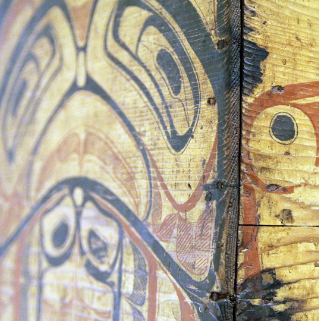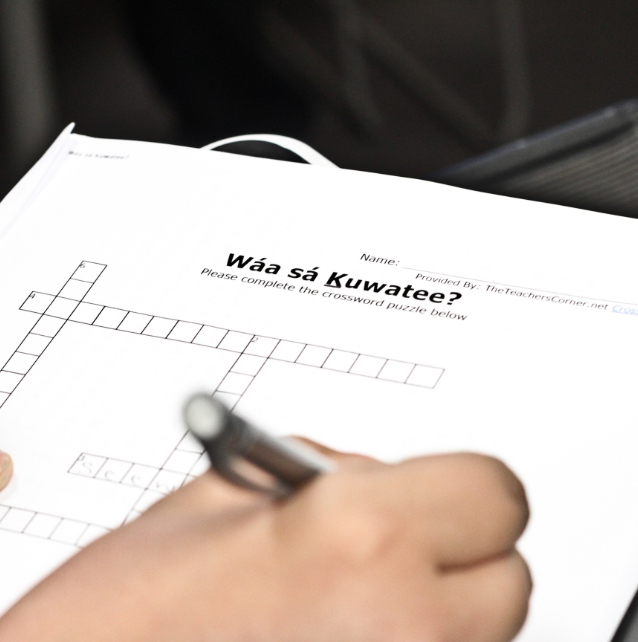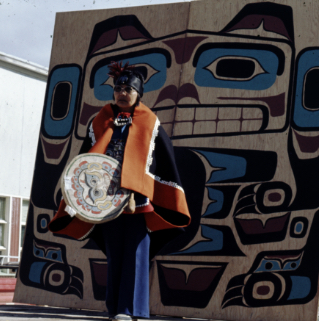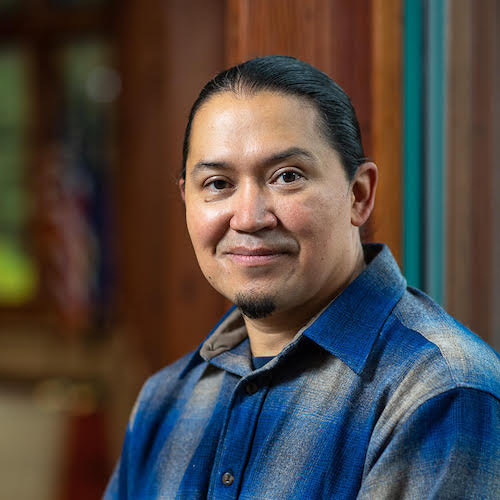Alaska Native Languages
- Dáng ḵats’áas eehl díi gudangáay ‘láagang.
- I’m happy you have come/come in. [Haida]
- Haa yoo x̱ʼatángi haa latseeníx̱ gux̱satée.
- Our language will become our strength. [Tlingit]
- Ła gwelga la̱k! La̱mgism, la̱mgism, ła gwelga la̱k!
- The fire is burning, warm yourselves, warm yourselves, the fire is burning! [Tsimshian]
Languages of Power & Use
As language learners we seek to follow the path our fluent elders created for us, while bringing these languages into all areas of our life. In languages we study pronunciation, sentence creation and conversational as well as ceremonial language. Our courses in language include X̱aad Kíl, Smʼalgyax and Lingít yoo X̱ʼatángi language courses at the beginning, intermediate and advanced levels as well as classes on language revitalization, language teaching, and Indigenous oral literature. Students within the Alaska Native Languages programs will develop a strong foundation in language learning, use, and advocacy.
Areas of Study

X̱aad Kil
X̱aad Kíl is the traditional language of the Haida people. Originally spoken within the Haida Gwaii region of Canada and the Prince of Wales Island of Southeast Alaska, Haida language learners are now found across Alaska and across the globe. With only around 20 first generation speakers left, the fight continues to learn this language. Come join us!

Lingít Yoo X̱ʼatángi
Lingít Yoo X̱ʼatángi is the traditional language of the Tlingit people. Originally spoken in Southeast Alaska and parts of the Yukon territory and northern British Columbia in Canada, Tlingit learners are now found worldwide. With around 80 first generation speakers left, efforts to revitalize Lingít continue. Welcome!

Smʼalgya̱x
Smʼalgyax is the traditional language of the Tsimshian people. Originally spoken in Southeast Alaska and northwest British Columbia, learners and speakers now live across the globe. With only around 100 first generation speakers left, if youʼve ever considered learning the Smʼalgyax language, nowʼs the time!
Creating was key in the culture but it had to be with the foundation of knowledge. The real key is to learn the foundation from the old masters and to expand on that. The art was always moving forward. There was always a progression.
Staff & Faculty
X̱’unei Lance Twitchell, M.F.A., Ph.D. (hú/du, he/him)

Professor of Alaska Native Languages
All systems and spaces have space for Indigenous languages, knowledges, arts, and peoples. You can study with us and stand up for Indigenous languages, ways of knowing, and decolonization in revolutionary self-love. Kakḵwa.áaḵw aag̱áa yakḵwadláaḵ: I will try, and I will succeed!
Éedaa Heather D. Burge, B.L.A., M.A.

Assistant Professor of Alaska Native Languages
View profile and contact info